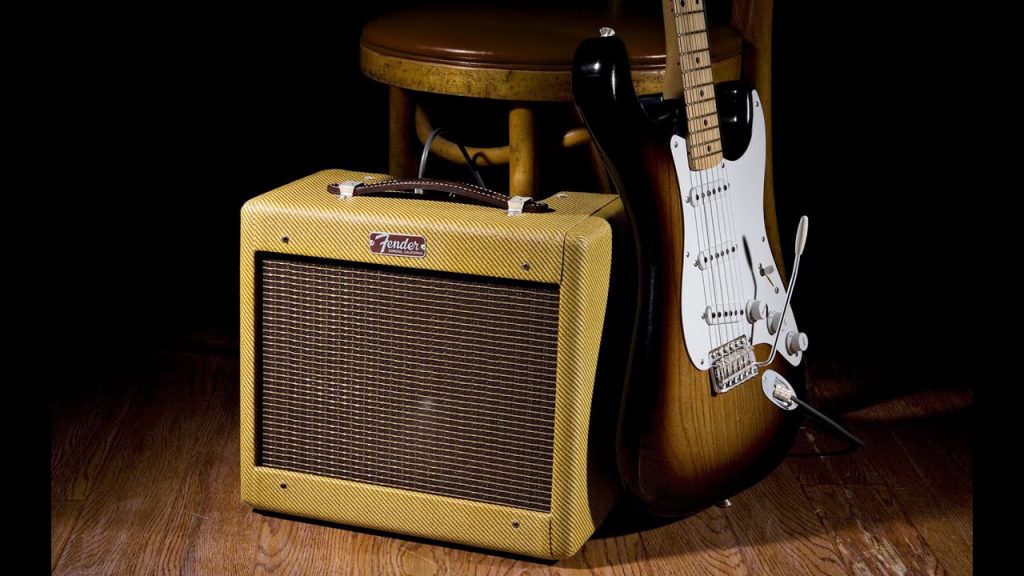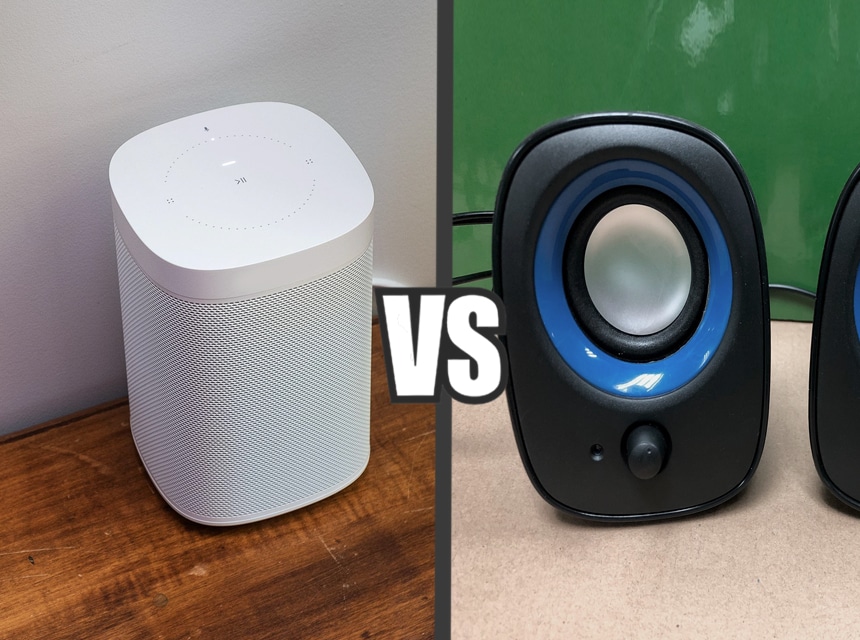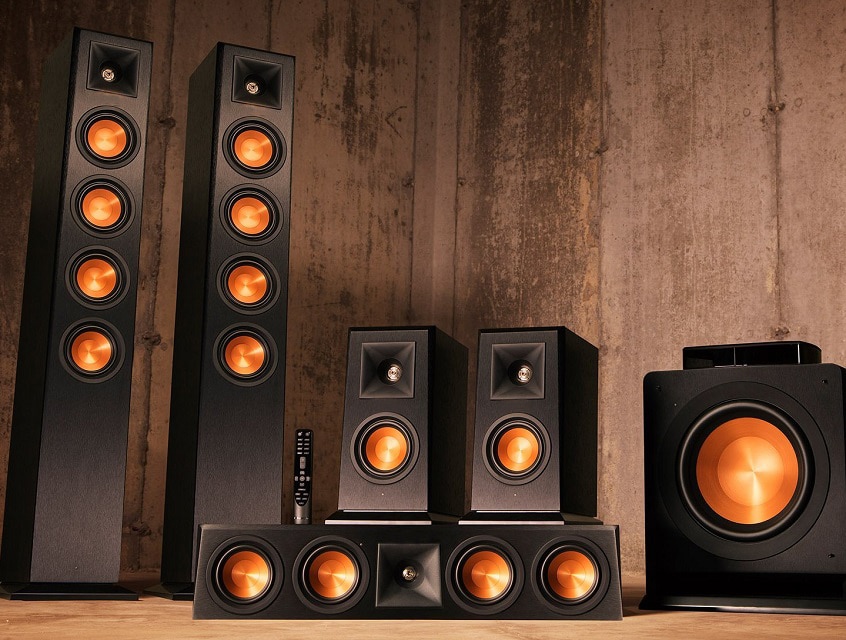Playing guitar is a fun, challenging, and rewarding hobby. Although a basic acoustic guitar is all you need to have a rockin’ time, having an electric guitar – and most importantly a capable amp – can blow your sound up to a whole new level. Guitar amps enhance your sound quality and provide you with several more playing options. However, when purchasing an amp, it is crucial to understand the different types of amps. In this article, we focused specifically on the best blues amp.
Blues guitar is characteristically bold and soulful, so plugging into an amp that can fully embody the groove pouring out of your guitar is of utmost importance. A capable blues amp is different from other amps most significantly by its components. Traditionally, blues are played on the older valve amps instead of the newer solid state amps. Valve amps, often referred to as “tube” amps, are inherently imperfect when it comes to transferring the sound from guitar to speaker. The distortion created in the process is warm and creamy: the very effect that is quintessentially characteristic of blues guitar.
In reviewing the amps listed below, we considered several vital factors: type, configuration, and power, all of which hinge upon how you intend to use it. The type will affect the tone and feel, the configuration will affect the portability and aesthetic, and power will affect the range and volume of the amp. Using detailed reviews and feedback from real users, we’ve put in the hard work to create this one-stop guide, so all you have to worry about is which song you want to play first. For your convenience, we included a useful comparison table, detailed reviews of each product, and a buying guide to help you choose the best blues amp to accompany your guitar!
More features: Presence, Middle, Bass, Treble, Volume (Bright Channel), Volume (Normal Channel) controls
The ’59 Bassman is a great product from the Fender line of amplifiers. With the prestige of the Fender brand, you can expect nothing less than glamorous sound. The ‘59 Bassman is exactly that. The rich tones provided by the Bassman transport you back in time to the origins of the blues genre.
The ’59 is a beast, packing four 10” speakers and a handsome 45 watts for your playing or recording pleasure. With US-made GT-6L6-GE output tubes, improved 12Ax7 preamp tubes, and an original spec 5 ARY rectifier tube, Fender made the ’59 Bassman with one purpose in mind: to produce quality sound. Additionally, the design of the ‘59 screams class and style, with a lacquered tweed covering and a striped oxblood grille cloth.
At 59 lbs., it isn’t the lightest amp, but it can still be readily transported. The ’59 is quite pricey and is a sizeable investment, but rest assured knowing that the sound produced will be worth every penny. Even at its four-figure price point, however, it is still much cheaper than a lot of “boutique” amps with poorer sound quality. Therefore, if you are in it for the long run and are looking for professional-quality sound at a reasonable price, this is the amp for you.
More features: foot-switchable tremolo effect, three-band EQ, valve rectifier
The fact that this was the amp that Eric Clapton plugged into on his way to legendary status speaks volumes about its quality. The Marshall 1962 Bluesbreaker was Clapton’s weapon of choice for several reasons.
This amp is minimalistic in its design. A few simple controls provide for a smooth user experience. The Bluesbreaker finds its home in the creamier mid-range tones but has no trouble in the lower or higher ranges. The lower wattage is a breeding ground of sweet distortion that will leave your audiences in awe.
Even a beginning guitarist can easily push clean tones over that glorious, crunchy edge simply by turning up the guitar’s volume. This feature makes for a very intuitive playing experience that allows the musician to channel soulful rock and roll freely, without worrying too much about the mechanics. The Bluesbreaker features two 12” speakers with plenty of boom for almost any gig, but it can still be quiet enough to be played in your garage. Additionally, for those seeking dominating sound, a boost pedal will blow into the stratosphere.
Although the Marshall weighs a hefty 78.5 pounds, it can still be carried by one person. Regardless of the weight, having to lumber this beast around is a small price to pay to sound like a blues god. The Bluesbreaker does cost significantly more than the other amps on our list, which means it might not be accessible to everyone. This amp is for the experienced guitarist who is looking to produce the tones of blues legends.
More features: Fender spring reverb, effects loop, two-button channel footswitch, normal and drive channels
Fender has long been an authority when it comes to all things guitar, and they continued that legacy here with this classy looking Reissue. The vintage look will appeal to people who want a retro-style amp, and you can always count on that trademark Fender quality. Their aim here was to deliver a warm, boutique-quality tone at a mass-produced price, and we believe they delivered.
Specifically designed for the blues guitar player, this amp can deliver a super clean sound without sacrificing the ability to create blues-y distortion when needed. The Reissue comes with the Fender’s real spring reverb which will give you that sweet slap back. With regard to volume, this little box puts out a loud sound and will audibly fill a room.
This small tube amp comes with a nice cover and is very compact and portable at only 30 pounds. The two-button footswitch allows you to control reverb and select your channel. While the reverb is limited, a reverb pedal can easily be added to compensate. The Reissue also features dual inputs for increased flexibility.
There are a couple of downsides to this amp, however. The Reissue has a hard-wired power cord, which creates a whispering hum when it’s sitting idle. Additionally, while it does pack a decent wallop for its size, it might get faded out in a band setting by its bulkier competitors.
Overall, the Fender Blues Deluxe Reissue will satisfy and possibly exceed most musicians’ needs. Although you will need a more powerful amp to play in a gig, this amp will serve you well in all other respects. For these reasons, we believe that the Reissue is the best bang for your buck.
More features: USB record output, Dual Tone switch
The Roland Blues Cube Artist balances the nostalgic sounds of vintage blues with the versatility of modern technology. The Cube is a solid-state amp and features a single, powerful speaker that can pump out 80 watts of raw musical sweetness.
It might be counter-intuitive to use a solid-state amp for blues, but the Cube incorporates a dual tone switch between clean and crunch. This amp also features a wide range of power options, varying from bedroom practice to full-blown concert capability. Additionally, since it lacks tubes, the Cube is inherently more durable and resilient to falls.
The Blues Cube brings the 20th-century trademark blues sounds into the 21st century by digitalizing the amplification process without sacrificing the tube amps’ iconic sound. Furthermore, this amp sports a useful USB output that allows the aspiring musician to record directly to their computer. With its tweed tones, basket weave grille cloth, cream-colored tolec, and chrome hardware, this amp is an elegant blend of all rock ages that is sure to satisfy any audience.
More features: 1-button footswitch for FAT mid-boost, modified preamp circuit, spring reverb
The Fender Blues Junior IV is ideal for great quality on the go. Essentially one half of the Marshall Bluesbreaker, this amp features one 12” Celestion speaker and 15 watts of power. Do not be fooled by its smaller build, however. The Blues Junior, much like the rest of the Fender line, was still designed with touring in mind, and certainly rises to the challenge.
Sonically, the Junior sports several features that make it a reliable playing companion. Fender hit a tonal sweet spot between the fullness of the preamp circuit and the smoothness of the spring reverb, delivering a balanced definition that will be clear at almost any volume. The single-switch foot pedal serves a remote activator of the FAT switch for those moments when it’s time for a bold solo.
The Blues Junior clocks in at just 31 lbs., making it one of the most portable amps around. This amp is a handsome machine as well, wearing an elegant and classy pre-aged grill cloth. Rocking on a stage with the Junior by your side will make for a great impression.
On the downside, upon researching previous customer reviews, it appears that the build quality of this particular amplifier is not of legendary Fender prowess. Customers reported that some surfaces start to peel with use, and the short warranty does not provide for complete confidence. The Junior, however, will still more than satisfy the needs of almost any guitarist, and it’s hard to beat the sound quality at such a low price.
More features: 3-band passive EQ (bass, middle, treble), Master reverb, footswitch included
The Peavey Delta Blues 115 is a versatile 30-watt amp that will fit practically any playing style. Its 30-watt potency is ideal for small to medium size venues, and can always be mic’d for larger appearances.
The Peavey contains the thick sounding Celestion Fullback G15v-100 speaker, so a full-bodied sound is essentially guaranteed. This specific Celestion speaker produces clean notes that are characteristically warm and colorful. The amp in itself uses the spring reverb to solidify those clean tones – but when needed, you can slam it with overdriven and complex tones to get the bluesy crunch you seek. For this reason, guitarists consider the Delta’s reverb amongst the best in its class.
The speed/intensity controls allow you to sort through the diverse range and hone the output to your desired effect. The optional footswitch will allow you to switch channels easily, making playing in front of an audience exciting and intuitive. Moreover, you can trust that you’ll be playing with the Delta for a long time because Peavey is known to make amps that last.
According to some reviewers, the tremolo can sometimes cause the volume to drop mid-play. This problem might be particularly dangerous for blues music and its many tremolo-reliant songs. However, the very reasonable price point makes this a risk worth taking in our opinion.
More features: Normal and Top-Boost channels
Vox is the amp manufacturer that put British Invasion on the map, and therefore helped to grow rock’s popularity; following up on that act comes with a lot of pressure. Vox does not disappoint. The Vox AC series is traditionally synonymous with impressive cleans and natural flow, especially in the bass range. The Vox AC 15C2 is a great example of the Vox legacy.
When it comes to amps, two is almost always better than one. Rock guitarists tend to agree that dual speakers like that of the AC15C2 provide a greater playing experience. This amp features two Celestion Greenback speakers that pump out 15 watts, ideal for small to medium venues. Nonetheless, the versatile Vox is also a great amp for home use by reducing the volume without losing clarity.
The AC15C2 has the larger spring reverb tank that was featured in some of its predecessors – one of the most important factors that formed Vox into a world-renowned brand. Three 12AX7 tubes and two EL 84 tubes deliver the power to the speakers, providing for a beastly sound.
Vox divided the controls on the AC15C2 into groups that are easy to navigate, maintaining Vox’s reputation for being user-friendly. The intuitive knobs make it easy to find the balances of clarity and graininess. However, having several features, and therefore more variables, can increase the chance of something going wrong. Consumers have reported this Vox amp to be somewhat unreliable and to require tinkering often to get it working properly. The AC15C2, therefore, might be a safer bet for an experienced musician who knows the amp engineering basics.
Now that you know our top seven amps for blues, it’s time to dig into what makes the best blues amplifier out there. How do you choose the right amp for you? Let’s find out!
Blues guitar is characteristically bold and soulful, so plugging into an amp that can fully embody the groove pouring out of your guitar is of utmost importance. A capable blues amp is different from other amps most significantly by its components. Amplifiers can be one of two different types: solid-state or valve (often referred to as “tube”). Solid-state amps use electronic components, such as transistors, to amplify the signal coming from the guitar. On the other hand, tube amps namely use vacuum tubes to amplify the signal, which renders them slightly more fragile than their solid-state counterparts. To most musicians, however, the extra risk (and commonly the higher price tag) is minimal compared to tonal vibrancy and authenticity produced by tube amps.

The features that an amplifier boasts are crucial in determining the output sound. When deciding which combination is right for you, it is of utmost importance to have a clear idea in mind of the style of music you want to play. We have listed the different features below to help you reach that vital decision.
The type of amp you need depends solely on the sound you wish to produce. A tube amp such as the Fender Bassman ’59 or the Vox AC series will traditionally play with more crunch due to its amplification process and is favored when playing blues or another form of distortion-reliant rock. Solid-state amps like the Blues Cube produce a clean-sounding tone and are typically preferred for touring or heavy use, as they seldom break down or need repair.
Configuration refers to the way the amp is set up. For anything outside of a sold-out arena, a combo amp will usually get the job done. In a combo amp, the head and cabinet components are all combined in one machine, as in the Marshall Bluesbreaker. If playing a sold-out arena is what you seek, however, then purchasing a powerful head and a sizeable cabinet is the way to go. There are exceptions to the general rule, but most are made by experienced musicians looking to create a very specific effect.
The biggest question you need to ask yourself regarding the power and speakers you choose is how loud you want to play.
The general trend is: the larger the speaker and more powerful the amp, the louder the sound produced and the larger the venue.
For most at-home musicians 30-watts or less will do the trick, moving on up to the 50-watt range for band practice or small venues. The 100-watt range and up belongs to the big-time musicians that want to fill the eardrum of thousands of people at a time.
Although it can often be difficult to remember exactly where the signal is going in and where it is coming out, a good musician needs to understand the ins and outs of jacks properly. In essence, by following the signal path we determine that output is anywhere the signal is going out, such as the jack on your guitar, and input is anywhere the signal is going in, such as input jack behind the speaker cabinet on your amp. When purchasing your next amp, you should have a clear idea of where you will be playing.
If you live in a quiet neighborhood and want to practice at home, you should seek an amp that has a headphone jack so you can practice silently. On the contrary, if you want to blow some ears out, seek out an amp with a line out to connect to larger speakers or a PA system.
Additionally, this might be a good time to think about the effects pedals you want to buy, as connectivity between your guitar, pedals, and amp needs to be possible. Another useful feature is USB connectivity like that of the Blues Cube that allows for direct amp-to-PC recording.
Built-in effects are most popular with modeling amps, which use electronic components to mimic the sound produced by their tube counterparts. Amps that have this capability are becoming increasingly popular due to their versatility. Musicians wanting to play surfer rock, for example, often seek out amps with the surfer-trademark tremolo effect.
As with any purchase, the warranty is the only sure-fire way to know whether or not your amp is going to last. The best-built amps don’t always have the longest-lasting warranties, but few things are more comforting than knowing your amp is protected against mechanical failures.
What did we conclude after all the research? The Fender Bassman ’59 and the Marshall Bluesbreaker are neck in neck when it comes to being the best in the business. However, with a significantly lower price point and a name that is synonymous with blues guitar, the Fender barely edges its opponent out. The Marshall is still a top-notch amp, and musicians looking to replicate Eric Clapton-esque soulfulness will most likely prefer it. We chose the Blues Deluxe Reissue third because of its impressively modest price point that sacrifices practically none of the legendary Fender quality. If you are a guitarist looking to dive deeper into the great deep blues but don’t quite have the budget to sound like Tom Petty or Eric Clapton, then this is the amp for you. Regardless of the amp you choose to accompany you and your guitar, remember to use our buying guide to ensure a sound purchase, and you will be on your way to legendary status in no time.





